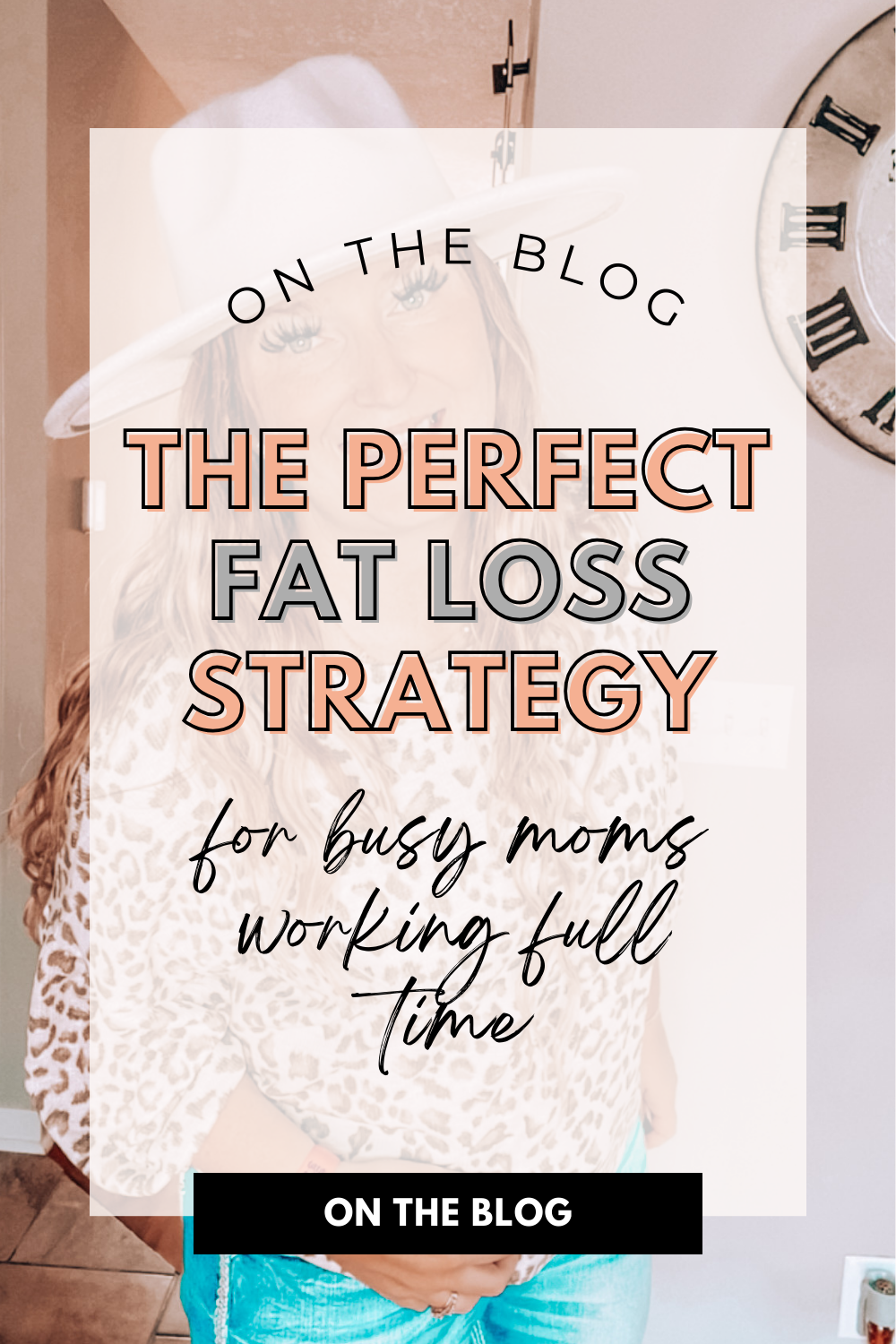How to Cut Fat Without Dieting (The Cutting Game Plan)

Hey mama, let’s talk about cutting fat without the misery of dieting. If you’ve ever felt trapped in the cycle of restriction, low energy, and frustration, you’re not alone. I’ve been there—cutting out my favorite foods, following diet rules that made no sense, and wondering why I always ended up back at square one. You can read more about it here.
But here’s the truth: Fat loss doesn’t have to mean dieting. You don’t have to starve yourself, give up carbs, or avoid date nights just to see progress. Instead, the key is learning how to create a calorie deficit without restriction so you can lose fat, maintain muscle, and actually enjoy your lifestyle.
Ready to ditch the diet mentality? Let’s break it down.
What Does “Cutting” Really Mean?
In the fitness world, a “cut” simply means intentionally eating in a calorie deficit to lose body fat while preserving muscle. It’s not about starving yourself or suffering—it’s about fueling your body in a way that supports fat loss while still giving you energy, satisfaction, and flexibility.
Cutting ≠ Dieting
Here’s what a smart, sustainable cut looks like:
✔️ Eating slightly fewer calories than your body burns (not extreme starvation).
✔️ Prioritizing protein to preserve muscle & stay full.
✔️ Structuring meals to balance blood sugar and keep cravings in check.
✔️ Still enjoying your favorite foods in moderation (because long-term success is the goal).
And here’s what dieting looks like (AKA what we’re NOT doing):
❌ Overly restrictive calorie intake (1200-calorie diets, no thank you!).
❌ Cutting out entire food groups (carbs are NOT the enemy).
❌ Binge-restrict cycles (being “good” all week, then going all out on the weekend).
See the difference? Cutting fat should feel empowering, not miserable.
How Long Should a Cut Last?
A cut isn’t forever, and it’s not meant to be a permanent way of eating. Your body needs breaks to keep your metabolism strong, your hormones balanced, and your mindset in check.
Most successful fat loss phases last anywhere from 6 to 12 weeks, depending on:
- Your starting point (how much fat you want to lose).
- Your calorie intake (if your metabolism is already adapted to low calories, you may need a different approach first).
- Your stress levels & lifestyle (if life is crazy, a long aggressive cut may not be best).
Pro Tip:
If you feel constantly fatigued, hungry, or irritable, it might be time to pause and reverse diet back to maintenance for a while before cutting again.
The 4-Step Cutting Game Plan
Now that you know what cutting is and how long it should last, here’s your step-by-step game plan to start losing fat without feeling deprived.
1. Find Your Calorie Deficit (Without Guessing)
The biggest mistake women make? Guessing how much they should eat. Instead, let’s do this the right way:
Step 1: Calculate your Total Daily Energy Expenditure (TDEE)—this is how many calories your body burns daily.
Step 2: Subtract 10-20% from that number to find a slight deficit (not extreme starvation).
Step 3: Track your intake for a few weeks and adjust as needed.
Action Step: Use a TDEE calculator (like MyFitnessPal or an online tool) to determine your starting deficit calories.
2. Prioritize Protein & Smart Macros
If you want to burn fat while keeping muscle, protein is your best friend. Here’s why:
✔️ Protein keeps you full (goodbye, constant hunger!).
✔️ Protein helps maintain muscle while cutting fat.
✔️ Your body burns more calories digesting protein (higher thermic effect of food).
General Protein Goal:
0.8-1g per pound of body weight (or per pound of lean body mass if you have a high body fat percentage).
Example:
- If you weigh 170 lbs, aim for 136-170g of protein per day.
- If that feels too high, start with 100g and build up.
Action Step: Write down 3 high-protein meals/snacks you enjoy and plan to include them daily.
3. Structure Your Meals for Satiety & Balance
A huge mistake women make when cutting? Not eating enough of the right foods, which leads to intense cravings and crashes.
Here’s the key: Balance your meals to support blood sugar & energy.
🥩 Protein → Lean meats, eggs, Greek yogurt, protein powder.
🥑 Healthy fats → Avocado, nuts, olive oil, salmon.
🍚 Slow-digesting carbs → Oats, quinoa, sweet potatoes, fruit.
🥦 Fiber-rich veggies → Leafy greens, cruciferous veggies, beans.
Example Balanced Meal:
🍳 Scrambled eggs + avocado + whole wheat toast + berries.
🥗 Grilled chicken + quinoa + roasted veggies + olive oil dressing.
🍛 Salmon + sweet potato + asparagus + butter.
Action Step: Plan one balanced meal for tomorrow using this formula: Protein + Fat + Fiber + Carb.
4. Cut Without Deprivation (Yes, You Can Still Have Treats!)
Let’s be real—if your cut is too restrictive, you won’t stick to it. That’s why we use the 80/20 rule:
✔️ 80% nutrient-dense foods (whole foods, lean proteins, veggies).
✔️ 20% flexible foods (yes, you can have chocolate & still lose fat!).
🍕 Love pizza? Have 1-2 slices with a side salad.
🍫 Love chocolate? Enjoy a small piece daily instead of bingeing.
The key? PLAN FOR IT.
When you allow yourself small treats in moderation, you won’t feel deprived or have intense cravings.
Action Step: Pick one treat you love and plan how to fit it into your macros this week.
Your Next Steps (Let’s Get Started!)
Whew! You now have everything you need to start your fat loss phase without dieting or deprivation. Here’s what to do next:
✅ Step 1: Use a TDEE calculator to find your starting calories.
✅ Step 2: Set your protein goal (aim for 0.8-1g per lb of body weight).
✅ Step 3: Plan one balanced meal for tomorrow.
✅ Step 4: Choose one treat you’ll enjoy this week (guilt-free!).
Remember: Fat loss is a process, not an overnight fix. By following this strategy, you’ll be able to lose fat, maintain muscle, and actually enjoy the journey without falling into another diet trap.
Comment below: What’s one small change you’ll make this week to start your cut the right way? Let’s chat!






